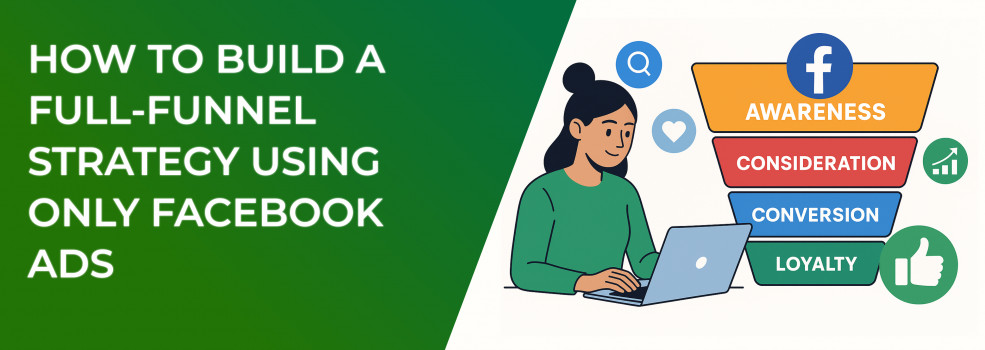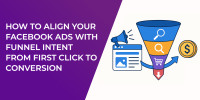Imagine running a single, streamlined acquisition engine that attracts strangers, guides them through awareness and consideration, and ultimately converts them into loyal customers on Facebook. Thanks to Advantage campaign budget, improved retargeting pixels, and smarter optimization tools, you can do all of this without adding extra channels or juggling data across multiple platforms.
Facebook’s ad ecosystem reaches more than three billion monthly active users, rolling audience discovery, creative experimentation, and first‑party attribution into one neatly controlled interface. Because insights flow from awareness through purchase in a single dashboard, every impression serves as feedback for the next stage of your funnel.
If you’re wondering whether Facebook ads are even the right growth lever for your business, our deep‑dive on Are Facebook Ads Worth It? lays out the real ROI math.
Why Facebook Remains a Full‑Funnel Powerhouse
Facebook combines reach, precise targeting, and real‑time algorithmic bidding, allowing marketers to manage the entire journey inside one platform. When you stop exporting spreadsheets and start trusting the in‑platform data loop, you’ll notice how quickly you can turn fresh learnings into higher‑performing ads.
Mapping the Funnel: Awareness, Consideration, Conversion, and Loyalty
Top‑of‑Funnel (TOFU) – Awareness
Goal: Introduce people to your brand
Core metrics: Reach, ThruPlay, CPM
Middle‑of‑Funnel (MOFU) – Consideration
Goal: Educate and nurture
Core metrics: CTR, cost per landing‑page view, video watch time
Bottom‑of‑Funnel (BOFU) – Conversion
Goal: Trigger the last click
Core metrics: CPA, ROAS, purchase value
Post‑Purchase (Loyalty)
Goal: Increase repeat orders and referrals
Core metrics: Repeat purchase rate, LTV, referrals sent
By installing the Facebook pixel from day one and letting Meta pass events (page views, add‑to‑carts, and purchases) back into its algorithm, you create a virtuous cycle in which each campaign learns from the performance of the others.
1. Top‑of‑Funnel: Casting a Wide Net
At this stage you’re looking for scale rather than surgical targeting. Leverage broad lookalikes and interest‑based audiences while letting Meta’s Advantage campaign budget dynamically allocate spend across ad sets. You can get a step‑by‑step walkthrough of audience basics in Facebook Ad Targeting 101 before you start building TOFU campaigns.
Broad targeting at the top of the funnel relies on Meta’s algorithm and smart audience choices.
Before presenting any offers, spark curiosity with short videos or lightweight motion graphics that earn at least a three‑second watch. Those early views provide enough signal for the algorithm to find more people who are likely to engage with your story.
Once you’re consistently winning attention, you’re also quietly building remarketing lists for later stages of the funnel.
2. Middle‑of‑Funnel: Nurture Qualified Prospects
Your audience is now aware of who you are; it’s time to deepen their understanding. Create custom audiences from email subscribers or CRM segments and serve them longer‑form content: case studies, product demos, and live sessions that answer common objections.
Layer refined lookalikes (1–3 percent) with interest filters to keep quality high. Finally, retarget engagement audiences, people who have watched your videos or interacted with your page, to maintain momentum without wasting budget on cold prospects.
If defining your target persona still feels fuzzy, bookmark the comprehensive Step‑by‑Step Guide to Defining a Target Audience.
3. Bottom‑of‑Funnel: Convert and Retain
Dynamic Product Ads (DPAs) automatically pull items from your catalog and show each shopper the exact SKU they viewed. Combine DPAs with limited‑time offers, bundles, or free‑shipping thresholds to nudge the final purchase.
After a customer buys, flip them into a post‑purchase custom audience and deliver referral incentives or upsell campaigns within two weeks. This loyalty loop increases lifetime value and keeps the funnel spinning without extra acquisition costs.
Measurement, Testing, and Continuous Improvement
Below is a simple maintenance routine that prevents stagnation and ensures your campaigns keep learning:
Good testing hygiene means adjusting one variable at a time—copy, creative, or audience—not all three simultaneously.
Common Pitfalls and Quick Fixes
Seeing the dreaded “Ad Set May Get Zero” warning? Here’s exactly Why It Happens and How to Fix It.
Launching too many ad sets at once forces Meta back into its learning phase and slows optimization. Keep new‑asset volume modest until you reach at least fifty conversions per week.
Creative fatigue creeps in faster than you expect. Rotate visuals every seven to ten days to stay ahead of declining click‑through‑rates.
Ignoring Meta’s native performance alerts leaves money on the table. The platform’s recommendations often flag low‑quality creative or audience overlap — free advice you can apply immediately.
Ready to Build Your Own Funnel?
Start broad, narrow with custom audiences, and close with pixel‑powered retargeting. Allocate thirty days to gather data, trust the algorithm to learn, and refine based on real‑time insights. With consistent testing and iterative improvements, Facebook alone can deliver a self‑sustaining growth engine, no extra channels required.

